-
Welcome to BirdForum, the internet's largest birding community with thousands of members from all over the world. The forums are dedicated to wild birds, birding, binoculars and equipment and all that goes with it.
Please register for an account to take part in the discussions in the forum, post your pictures in the gallery and more.
Search results
-
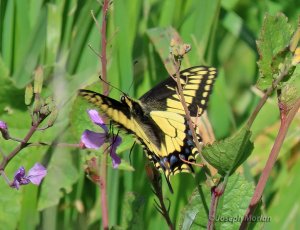
Anise Swallowtail (Papilio zelicaon)
This attractive common species ranges across western North America. The widespread naturalization of introduced Sweet Fennel (Foeniculum vulgare) may account for its being so widespread. This is the typical yellow form. A black form also occurs with reduced yellow striping. Formerly "P. gothica."- jmorlan
- Media item
- anise swallowtail california papilio zelicaon usa
- Comments: 0
- Category: Butterflies & Moths
-
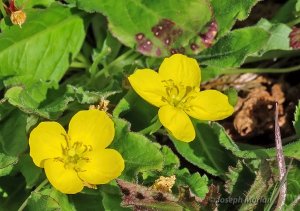
Sun Cup (Taraxia ovata)
A fairly common low growing member of the Evening Primrose family native to coastal California from Humboldt to San Luis Obispo Counties. Sometimes called "Golden Eggs." Formerly placed in the genus "Oenothera" or "Camissonia." Its leaves are edible but reportedly act as a mild laxative.- jmorlan
- Media item
- california sun cup taraxia ovata usa
- Comments: 2
- Category: Wild Flowers, Trees, Shrubs, Fungi
-

Comment by 'jmorlan' in media 'Grand-collared Darkling Beetle (Eleodes grandicollis)'
Not 30 minutes after I posted this, Google AI plagarized word-for-word what I wrote. Hmmm..- jmorlan
- Gallery comment
-

Excellent Pages V2
Nice. But what's the point of this: {{VSearch|"Shikra" {{!}} "Shikra"}} ?- jmorlan
- Post #198
- Forum: Opus Discussion Area
-
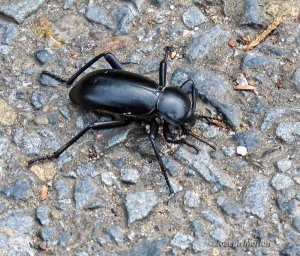
Grand-collared Darkling Beetle (Eleodes grandicollis)
Restricted to California and Nevada, this one has no English name so I made one up. Sometimes called Stink-beetles or Desert Stink-beetles they are famous for squirting a foul smelling toxic acid from their rear which can burn the skin of potential predators.- jmorlan
- Media item
- california eleodes grandicollis grand-collared darkling beetle usa
- Comments: 2
- Category: Invertebrates
-
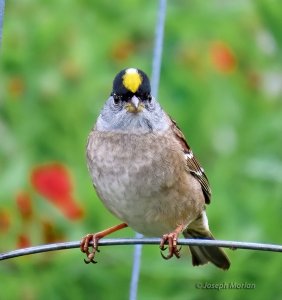
Golden-crowned Sparrow
In full breeding plumage for only a short time before they migrate back north to breed. A common wintering sparrow in most of California, they usually remain through the end of April. They sing throughout the year, a melancholy "Oh dear me" or "Three blind mice." However hard-luck gold miners in...- jmorlan
- Media item
- california golden-crowned sparrow usa zonotrichia atricapilla
- Comments: 0
- Category: North America
-
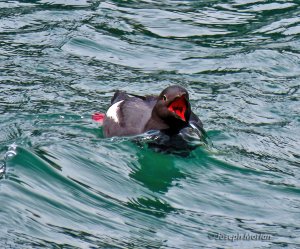
Pigeon Guillemot
An adult in breeding plumage, the striking bright red mouth lining and tongue are not visible unless they are calling. California birds are the race "C. c. eureka" which are smaller with shorter wings, but with a longer bill than populations breeding further north. These distinctive alcids nest...- jmorlan
- Media item
- california cepphus columba pigeon guillemot usa
- Comments: 0
- Category: North America
-
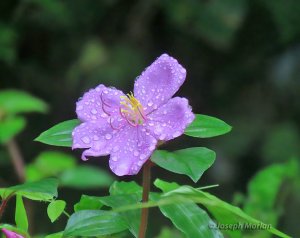
Spanish Shawl (Heterotis rotundifolia)
Raindrops on the petals. This lovely flower was introduced to the Caribbean from tropical West Africa.- jmorlan
- Media item
- heterotis rotundifolia puerto rico spanish shawl
- Comments: 2
- Category: Wild Flowers, Trees, Shrubs, Fungi
-
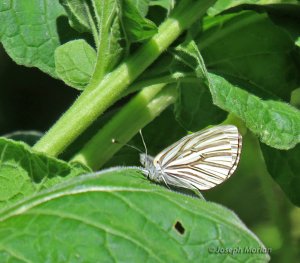
Margined White (Pieris marginalis)
Note the dark vein outlines on the underside of the wing. Formerly lumped with Green-veined White (P. napi) of Europe and Mustard White (Pieris oleracea) of northeastern North America, it is now recognized as a separate species inhabiting western North America. This is the spring form which has...- jmorlan
- Media item
- california margined white pieris marginalis usa
- Comments: 0
- Category: Butterflies & Moths
-
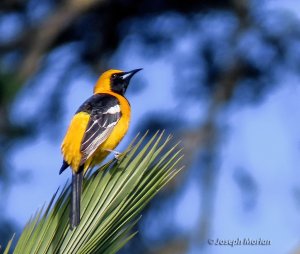
Hooded Oriole
Supposedly named for its orange hood, but seems like a misnomer. A proper "hood" should be dark. Historically, these orioles' northern limit was Southern California, but the planting of California Fan Palms (Washingtonia filifera) into Northern California allowed this Palm specialist to expand...- jmorlan
- Media item
- california hooded oriole icterus cucullatus usa
- Comments: 1
- Category: North America
-
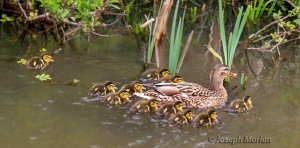
Mallard
Abundant and widespread across the northern hemisphere, this is a female with a newly hatched brood. Waterfowl chicks are precocial, covered with down feathers, eyes open and feeding themselves immediately after hatching. Most birds have altricial young, hatched blind, naked, totally helpless...- jmorlan
- Media item
- anas platyrhynchos california mallard usa
- Comments: 1
- Category: North America
-
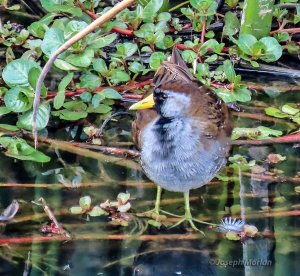
Sora
Thanks to a tip from our neighbor Peggy O'Brien, this nice adult male Sora came out in the open briefly. Females are similar but have reduced black on the chest. The name Sora reportedly comes from a Native American name for this shy marsh bird, more often heard than seen. A small chicken-like...- jmorlan
- Media item
- california porzana carolina sora usa
- Comments: 2
- Category: North America
-
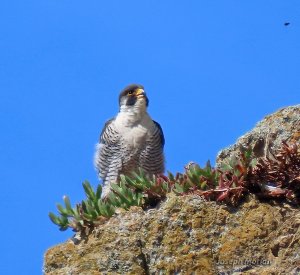
Peregrine Falcon
This impressive falcon is perched high on the cliffs overlooking Devil's Slide. The broad facial stripe suggests it is an adult "F. p. anatum," which is the breeding population in temperate North America. It is sometimes called the American Peregrine Falcon and formerly called the "Duck Hawk."...- jmorlan
- Media item
- california falco peregrinus peregrine falcon usa
- Comments: 5
- Category: North America
-
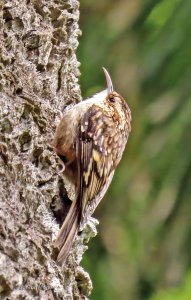
Brown Creeper
Looking like a bit of detached bark spiraling up the tree trunk using its stiff tail for support, this cryptic species searches for spiders and other insects using its curved bill like tweezers. Formerly lumped with the similar Eurasian Treecreeper, genetic and vocal studies have shown that it...- jmorlan
- Media item
- brown creeper california certhia americana usa
- Comments: 0
- Category: North America
-
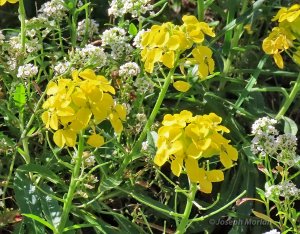
San Francisco Wallflower (Erysimum franciscanum)
Sometimes called "Franciscan Wallflower," this member of the Mustard family is a vulnerable range restricted species endemic to rocky cliffs of the Northern California coast from Sonoma to Santa Cruz counties. It may be confused with the similar Western Wallflower (Erysimum capitatum) but their...- jmorlan
- Media item
- california erysimum franciscanum san francisco wallflower usa
- Comments: 0
- Category: Wild Flowers, Trees, Shrubs, Fungi
-
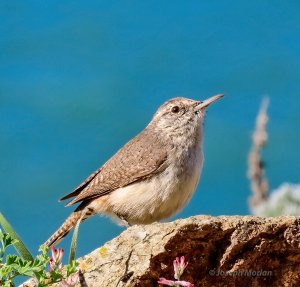
Rock Wren
These tiny gray-brown birds are easy to overlook as they forage on the towering cliffs of Devil's Slide. Rock Wrens are active little birds, often doing "knee-bends" while standing on a rock. The purpose of this behavior is unknown. Unlike many other wrens, the Rock Wren seldom holds its tail...- jmorlan
- Media item
- california rock wren salpinctes obsoletus usa
- Comments: 1
- Category: North America
-
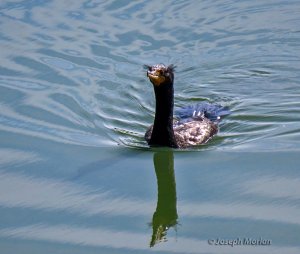
Double-crested Cormorant
People often wonder how the Double-crested Cormorant got its name since it does not usually display a crest, much less two crests. However just prior to breeding they grow out crests above each eye. Usually black, but sometimes white. This is presumably the Pacific Coast race "N. a...- jmorlan
- Media item
- california double-crested cormorant nannopterum auritum usa
- Comments: 1
- Category: North America
-
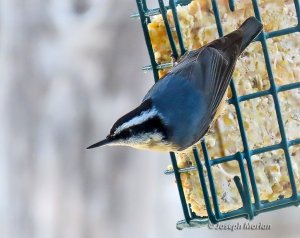
Red-breasted Nuthatch
The black crown and mask suggests this is a male. This irruptive winter visitor has been having a good showing this season with this one still periodically visiting our feeder. Three species of nuthatch occupy different Bay Area habitat regions with Pygmy Nuthatches in pines in the coastal fog...- jmorlan
- Media item
- california red-breasted nuthatch sitta canadensis usa
- Comments: 0
- Category: North America
-
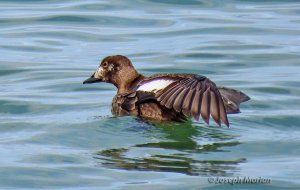
White-winged Scoter
I was excited to see this cooperative White-winged Scoter since I have not seen this species in a couple of years. This is a young female (formative plumage) hatched last year based on the dark bill, mostly white belly, and lack of a bump on the top of the bill. Many years ago White-winged...- jmorlan
- Media item
- california melanitta deglandi usa white-winged scoter
- Comments: 0
- Category: North America
-
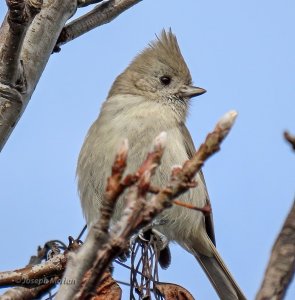
Oak Titmouse
This plain gray species with crest avoids the coastal fog-belt, favoring dry oak woodland and savanna. Formerly lumped with the similar Juniper Titmouse of the Great Basin under the name "Plain Titmouse"; the two were split in 1996 based on differences in song, habitat and genetics. This is...- jmorlan
- Media item
- baeolophus inornatus california oak titmouse usa
- Comments: 0
- Category: North America
-
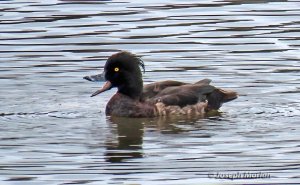
Tufted Duck
Usually a sleepy head, but not this time. This adult female was first noted by Ron Thorn six years ago January 2018 and it has returned every winter since. She can be difficult to pick out when sleeping with her head tucked. In addition to the tuft, the broad black bill tip extending well beyond...- jmorlan
- Media item
- aythya fuligula california tufted duck usa
- Comments: 0
- Category: North America
-
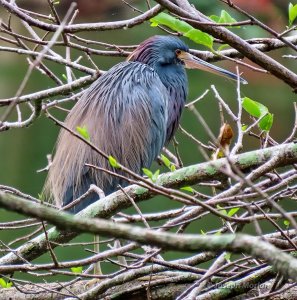
Tricolored Heron
Formerly called "Louisiana Heron," this is an adult in basic plumage. In breeding condition the base of the bill turns bright turquoise. This species favors southern swampy areas but is thought to be declining in North America after a period of range expansion from the 1940s to 1970s. The...- jmorlan
- Media item
- egretta tricolor florida tricolored heron usa
- Comments: 2
- Category: North America
-
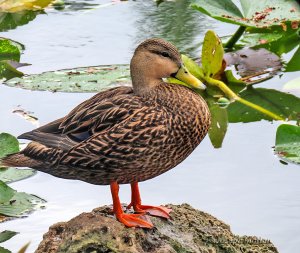
Mottled Duck
The Florida population is now recognized as a separate subspecies (A. f. fulvigula) from the allopatric Texas and Louisiana population (A. f. maculosa). Florida birds have a yellower bill and less distinctly marked plumage. This is a male. Females have an orange bill. A close relative of the...- jmorlan
- Media item
- anas fulvigula florida mottled duck usa
- Comments: 0
- Category: North America
-
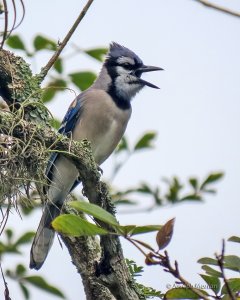
Blue Jay
This common but attractive Eastern North American jay was complaining loudly just outside the tram terminal. Their crest often lies flat, but here it is raised slightly. This is presumably the paler, duller South Florida race "C. c. semplei" which has recently expanded into the Florida Keys...- jmorlan
- Media item
- blue jay cyanocitta cristata florida usa
- Comments: 1
- Category: North America
-

Great Blue Heron
Preformative (first Fall) molt in the Great Blue Heron is protracted and often suspended during the winter resulting in peculiar plumage combinations. E. g. this one shows an adult crown pattern but also retained juvenile wing coverts with white spots on the feather tips. Largest of the North...- jmorlan
- Media item
- ardea herodias florida great blue heron usa
- Comments: 0
- Category: North America



